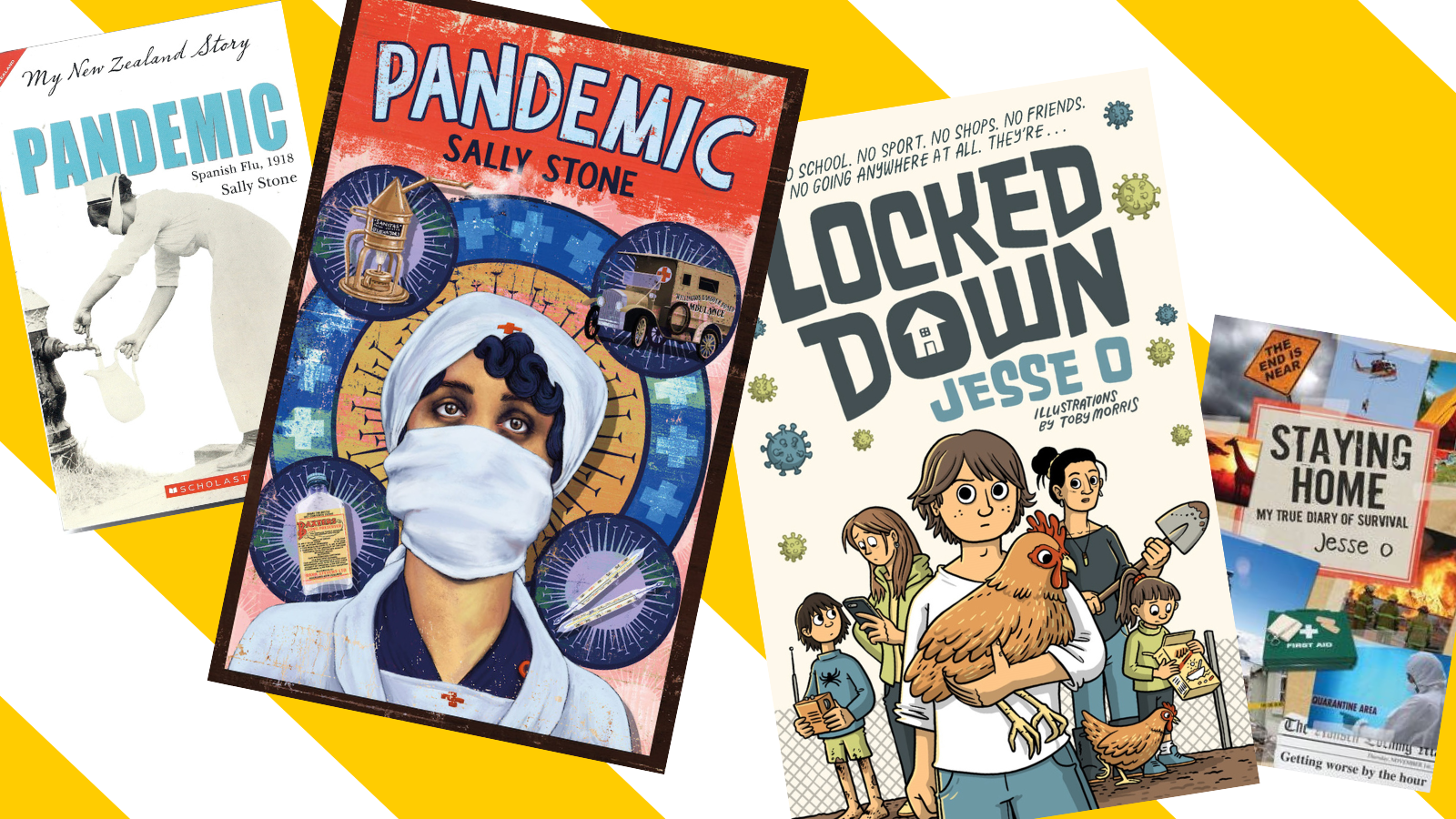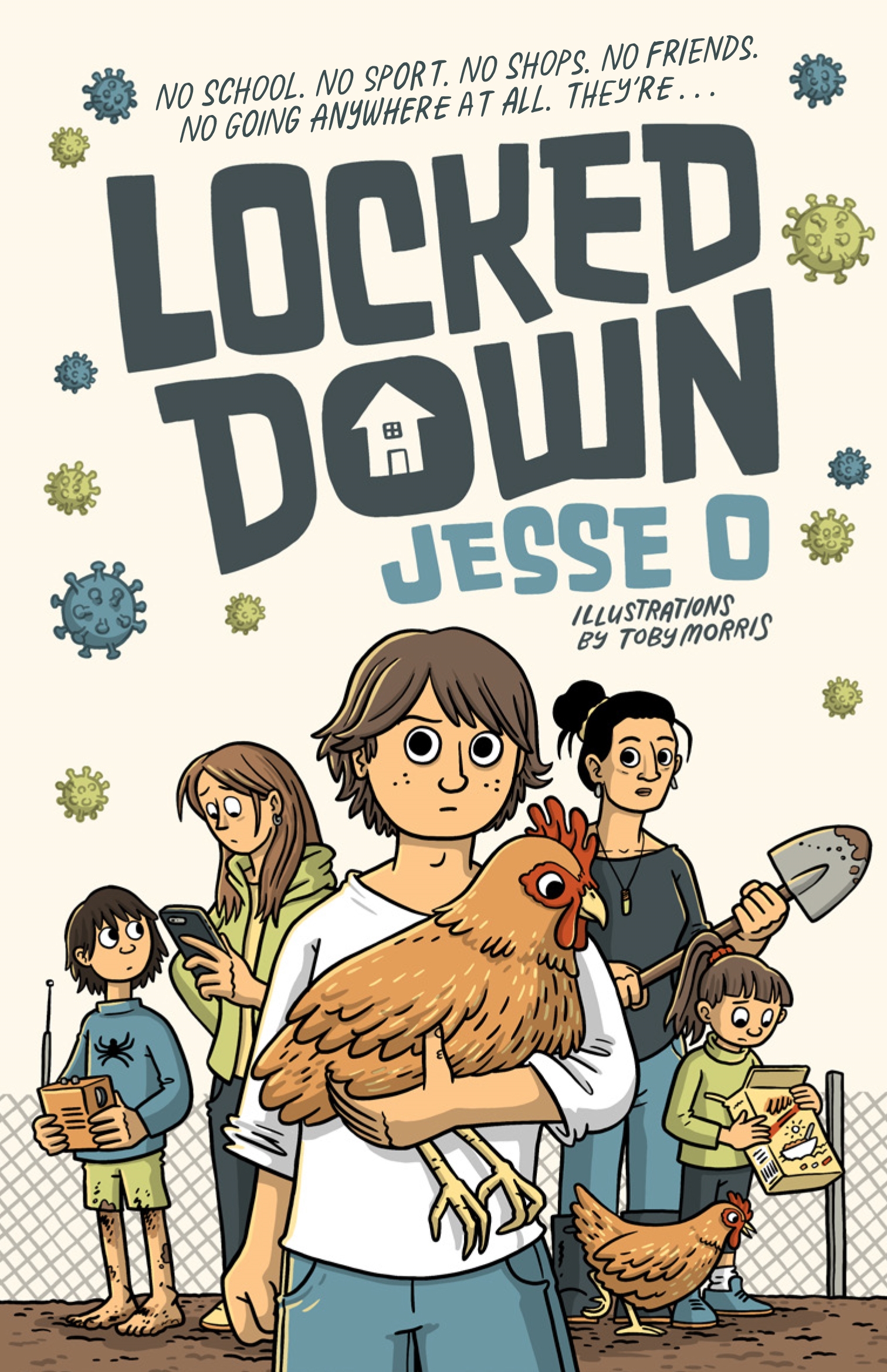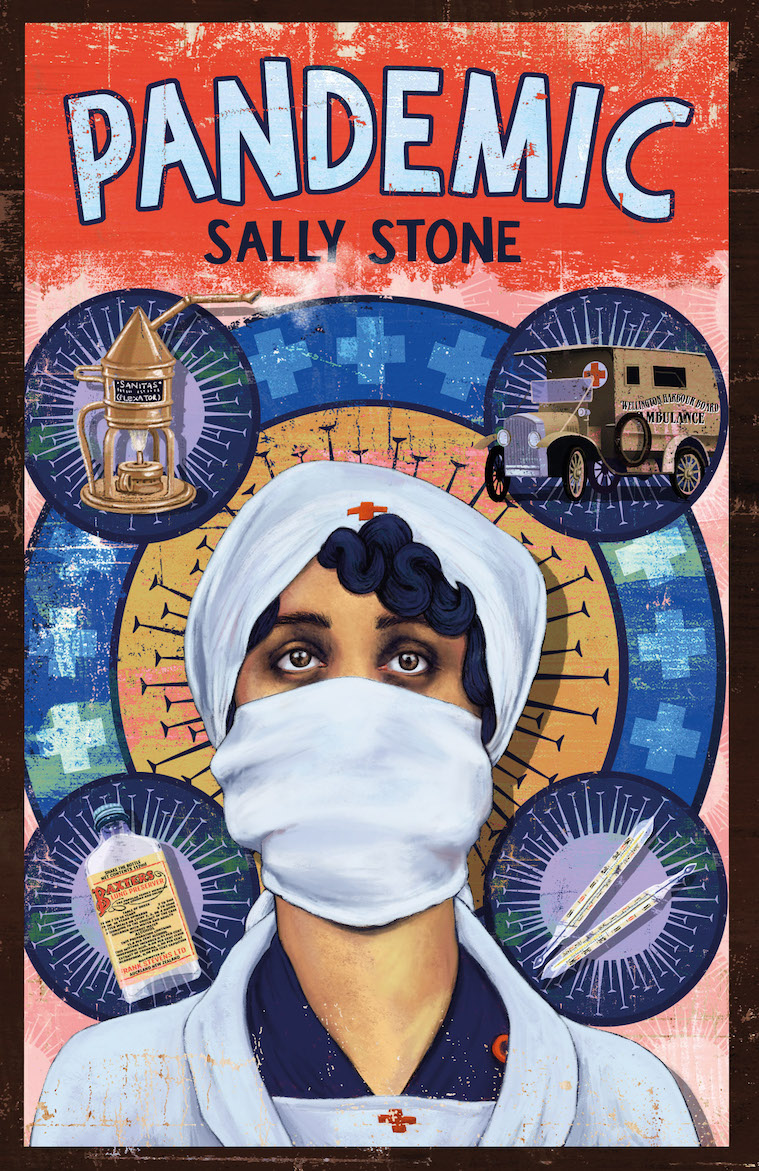Discussion of self isolation and social distancing and mask wearing may all feel very 2020s – but for those not in the know, two titles from Aotearoa sitting on shelves with shiny new covers are not, in fact, products of a COVID-19 era. Both Pandemic by Sally Stone and Locked Down by Jesse O were written years before we started tuning in for the 1pm update from the PM. Gillian Torckler read both these re-released titles and chatted to their authors.

I’ve recently read two newly released books for children where a viral pandemic takes over the world. Hmmm? Sounds a bit too close to home right? You’re probably thinking these two clever authors have capitalised on a world disaster, but what if I told you both books are re-releases of books originally published a decade ago? And that the story that unfolds in each is eerily similar to what has actually happened on a massive scale in the last year?
Locked Down by Jesse O (pen name of Jessica Le Bas) is set in modern times. The main character, Zac, is already grieving after the sudden accidental death of his father. As the pandemic puts normal life and school on hold, Zac’s family learn to cope with dwindling food supplies, power cuts and a neighbourhood in lockdown. The good news is that the family get through this intact, but the parallel unfolding of the story of Zac’s father’s death is both difficult and healing for Zac. I asked Jesse O whether it was her intention to not overburden Zac with further loss of life.
“In the book there are elements of death close by – the old neighbour dies, and of course in the news from up north there are reports of deaths. However I wanted Zac’s story to focus on survival strategies, rather than fear. It’s about working together, being resourceful, and helping each other. Zac’s father James provides a subplot, another example of overcoming challenges, for James and Zac.”
Locked Down has illustrations by Toby Morris which add another interesting element to this new version of the book. Jesse O scatters non-fiction side bars and lists throughout the book with great effect to explain the inner musings of Zac who is trying to make sense of his world. It’s a clever device and I asked Jesse why she did this.
“I like to make language fun, and hopefully these small diversions create not just meaning, but also a texture in the story. After all, nothing’s straightforward is it, in how we think and string ideas together? It’s all an exciting jumble.”
I think young readers will find these interesting additions to a captivating story. I am interested though how Jesse O came to be writing what has out to be a prophetic pandemic story more than a decade ago.
“I never set out to write about a pandemic. I wanted to write a survival story, to put a boy in a situation where he learns and grows, and comes to understand the good things in living a quiet life. The pandemic idea was of course inspired by the 2009 H1N1 pandemic that started in the spring of 2009. It was fresh in my mind, and provided ‘the antagonist’ – the obstacle to be overcome for young Zac Flint.”
In complete contrast with Locked Down, Pandemic written by Sally Stone tells a historical story of the Spanish Flu pandemic that spread through the world after World War One. I asked Sally Stone what prompted her to write this book.
“Although disease experts have been issuing warnings for years I think we all largely ignored the warnings and were completely surprised when we were faced with COVID-19. In recent years there have been a few pandemic outbreaks such as the bird flu and SARS but unlike COVID-19 they were nothing like the Spanish Influenza, which was by far the worst global pandemic for over 100 years.”
Freda Rose, the main character, is trying to make sense of her world which has been turned upside down as the men of her family have left New Zealand to fight in the war in faraway Europe. She and her mother are left managing the farm, indeed a situation that many women found themselves during both world wars. Freda uses her diary as confidante and friend.
“Freda Rose although not directly impacted by the pandemic was affected by it in so many ways. Her life as she knew it was remarkably changed firstly by the outbreak of WW1 and her beloved brother Bobby going off to fight and then by the Spanish Flu which was more devastating than any war. I think it was easier to keep Freda Rose as the main protagonist as an observer of the effects of the flu and therefore an engaging narrator of the story.”
Just like Locked Down this is a story of survival and of personal growth in a world that is less than certain and definitely unprecedented. Sally Stone interlaces the story with clichés that provide some humour and respite from the loss and devastation that surround this family. They are a necessarily and successful part of this book as they demonstrate how Freda is trying to make sense of all around her and clichés are just another one of those challenges. They add texture to the story in the same way as the nonfiction titbits that Jesse O uses to great effect. I asked Sally if this was intentional.
“I used clichés liberally throughout the book because they were so much a part of the vernacular of the time and provide examples of the speech and conversation used in the 1900s for the reader. A cliché is described as an overused phrase or expression but many were invented at the time so the use of them throughout the book provides a lot of historical imagery. Although language is constantly renewing itself, many of these clichés are still used frequently today.”
The ubiquitous clichés that are part of our everyday speech have made me think about how children and non-native English speakers makes sense of our everyday idioms; and indeed how they are making sense of this current pandemic.
In both books, school is an important part of the main characters lives, as it would be for the readers of these books. This is important because as we all now know, routine and carrying on with life is how we survive these dark and difficult times. But in Pandemic, Sally Stone uses the routine of daily life nearly a century ago to bring order to Freda’s disrupted world: Monday is laundry day, the ironing is done on Tuesday, and butter is made on Wednesday. And on Sunday, the big copper bath is filled.
I hope young readers will find these books comforting in the way that you do when you read of a character struggling but surviving life challenges. At the end of both books, you get the sense that Zac and Freda have been on an epic journey and not just survived it, but conquered their personal fears as well. Given the past year, these are welcome re-releases of a story we know too well ourselves. And, yes, the timing is perfect as our life in Aotearoa returns to relative normality.



Gillian Torckler
Gillian Torckler is the author of 19 books. Her latest children’s books include My Name Is Henry Fanshaw, a historical fiction sophisticated picture book, and 24 Hours on the Kiwi Seashore and 24 Hours in the Kiwi Bush, two nonfiction books she wrote with her photographer husband, Darryl. When she is not exploring the seas around Aotearoa or writing, she works as a medical researcher/professor at the Otago School of Medicine in Dunedin.



